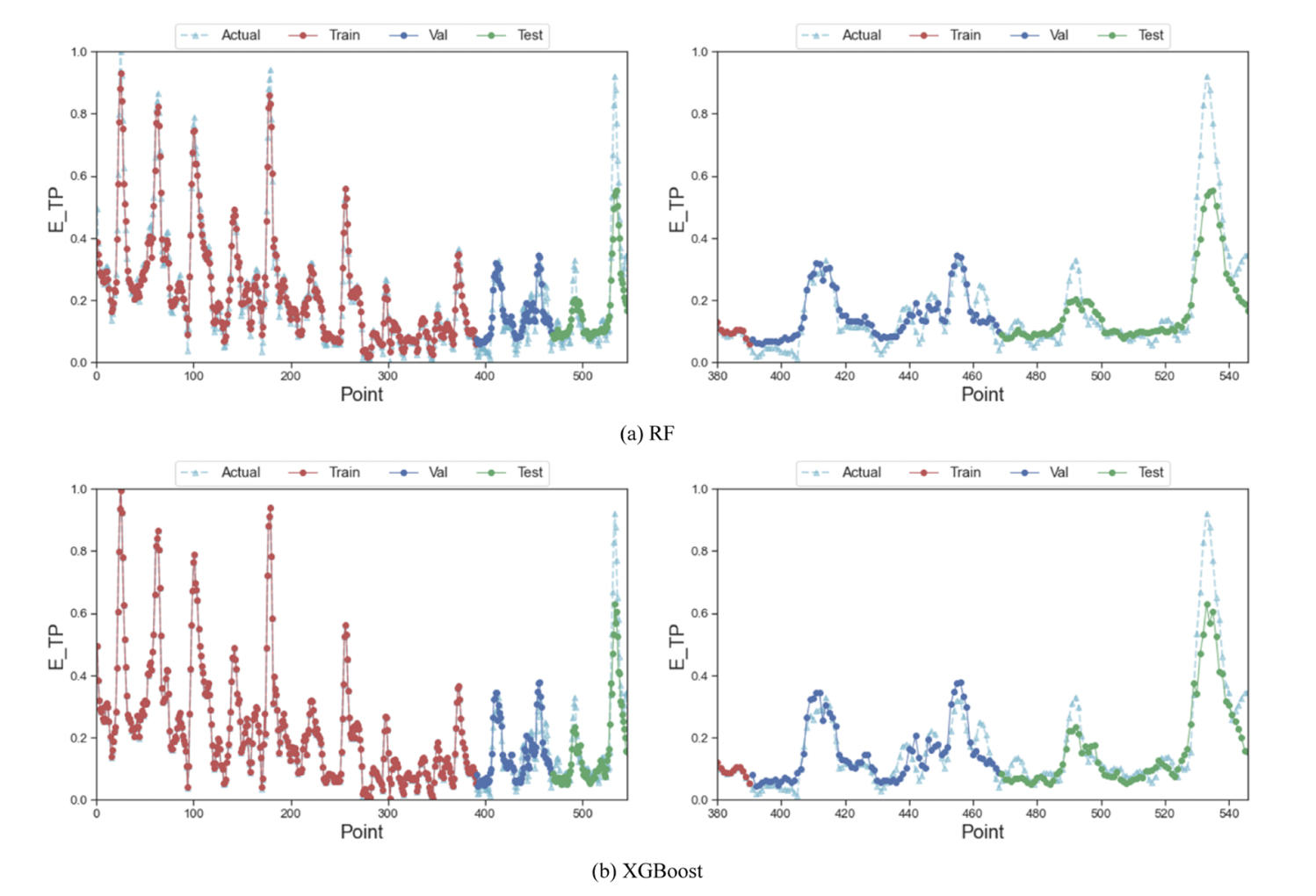Total Phosphorus Concentration Prediction in Euiam Lake, South Korea
Feb 2021 - July 2021, Ewha Womans University
Study Focus
This study establishes a framework to prioritize total phosphorus (TP) management strategies based on machine learning (ML). A comparative analysis is conducted to evaluate the performance of four ML methods: random forest (RF), extreme gradient boosting (XGBoost), deep neural network (DNN), and long short-term memory (LSTM). We also perform a gradient-based analysis to figure out the most influential factors on TP using the LSTM model.
Result and Discussion
The performance of ML models was evaluated through R, CCC, R2, MSE, MAE, RMSE, and MAPE. While all the models detected the seasonal pattern and successfully predicted TP concentration, LSTM outperformed other models in validation and test sets. Interestingly, after dividing the prediction performance of all ML models into three seasons (spring, summer, and autumn), the prediction of spring was relatively low compared with other seasons, which is assumed to be due to the low amount of water flow in spring. Among several features trained to predict the concentration of Phosphorus, the factors that affected most were the Phosphorus concentration and suspended solid concentrations from neighboring waterbodies.
New Hydrological Insights
This study demonstrates that a robust predictive model can be developed for a serial impoundment system with distinct seasonal characteristics of rainfall, temperature, and water quality, thereby facilitating the selection of management priorities. Based on the predictive model results, we conclude that it is the key for managing the target TP concentration to prioritize the incoming TP concentrations and determine the quantitative


Comparison of the actual total phosphorus history and prediction results obtained using four ML models: DNN, LSTM, RF, and DNN